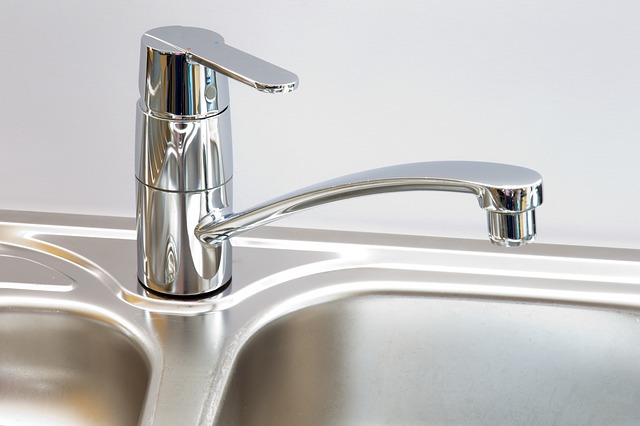
Did you know that Toronto homeowners can save money on their water bills by using less water? Well duh, right?
But the more interesting question is, “how do you use less water?“
Despite the fact that it’s a no-brainer, Toronto homeowners can save up to hundreds of dollars each year just by conserving water as little as possible. They just don’t know how.
Conversely, you could be wasting up to 40% of your water bill if you have leaky taps and unusable toilets at home. That would mean every time you turned on the tap or flushed the toilet, you would be wasting water.
Luckily for you, there are a lot of ways to be budget-conscious and water-efficient in your home. So here are some expert water-saving tips from professional plumbers in Toronto to start saving money.
Flush Toilets vs. Low-Flush or Waterless Urinals
All new homes in Toronto need to have a toilet that uses 1.6 litres per flush or less – this is the only type of toilet you will be able to buy new! If you have a flush toilet already, it is not subject to this bylaw. If you are buying used toilets for your home, make sure they are 1.6 litres or less per flush.
Toilets come in two types: standard flush (a pot with water), and low-flush (a smaller tank that fills up with water). A low-flush or waterless urinal uses a similar amount of water as a standard flush, but it eliminates the need to flush multiple times. It is not subject to the 1.6 litres per flush law.
There are many types of low-flush toilets that use even less than 1.6 litres per flush! We recommend that you always buy a 1.28 litre or less flush toilet – the difference is small and it has to be added up over years of usage.
Watersense-labelled toilets use even less than 1.28 litres per flush, saving you even more money in the long run!
Kitchen Fixtures (Sinks)
Your kitchen sink (and bathtub/shower) are your two biggest water users at home, and buying the right type of fixture for your kitchen is a great first step to saving water at home.
A new, standard or semi-standard size stainless steel sink uses about 2 litres per minute, while a single bowl undermount sink uses around 1.4 litres per minute – that’s 40% less! If you have an existing stainless steel or double bowl undermount sink, consider replacing it with one large bowl – the amount of time you spend filling up small bowls of water will be reduced.
You can also buy a dual-flush pulldown faucet with cartridges that use 0.5 and 1 litre per flush instead of two separate taps for your dishes and rinsing vegetables or hands. A 0.5 litre-per-flush tap is ideal for rinsing vegetables, hands or dishes. A 1 litre-per-flush faucet is best for filling large pots.
Always remember that if you’re not familiar with how to install new sinks for your kitchen, which most homeowners aren’t, it’s best not to try and wing it. Instead, hire a professional plumber to get the job done quickly and efficiently.
Kitchen Fixtures (Dishwasher)
A new full-size dishwasher uses around 7 litres per cycle – an average of two gallons! You can find compact or half-sized dishwashers that only use 4 to 5 litres per cycle – still more than enough water for cleaning dishes!
When buying a new dishwasher, always look at the number of litres it uses per cycle. The lowest you should go is 4 litres, which could save you about $120/year in energy costs compared to a standard-sized dishwasher, Mister Plumber says.
Washing Machine
Other small appliances that use a lot of water are washing machines. Front-loading washers usually have a higher standard water usage, so consider buying a top or pedestal loader instead – they use 20% less water!
If you’re buying a new washer, always buy “Water-efficient” under the specifications. Be sure to check that it uses less than 12 litres per load – this is enough water for most loads of laundry.
Advanced: Install a Greywater System
For more advanced ways to save water at home, look into greywater systems. Greywater is all the non-toilet waste from your sinks and showers. Greywater can be used safely for flushing toilets, irrigation, or washing cars if you design your system properly! The City has specific guidelines for greywater use, so make sure you check them out before planning your system.
Make sure to hire a professional plumbing service like Mister Plumber for a safe and proper greywater system installation. And if you can’t switch to using collected greywater, you can always minimize the amount of water your drain by only washing full loads and by running the dishwasher when it’s fully loaded!
Another way to save water is to use a commercial car wash that recycles its own greywater for washing cars. There are commercial car washes near downtown Toronto that do this!
Some other ways you can save water at home include:
- Fixing leaks in your home as soon as you notice them
- Taking shorter showers
- Turning off the faucet when you’re brushing your teeth or shaving
- Using a broom instead of a hose to clean your driveway
- Rinsing vegetables in the sink, not under running water
Of course, there are many other ways to save water in your home and at work – we hope these ideas will inspire you! Now you can use all this new knowledge to go out and save water.
If you like our suggestions and want more information on how they can help you save money and conserve resources, read up on the City of Toronto’s Water Conservation web page.
If you need help with water-saving plumbing installations, hire Mister Plumber, a professional plumbing service serving Canadians for over 18 years.













